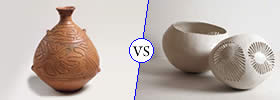Difference between Balloon Angioplasty and Angioplasty
Key Difference: Angioplasty or balloon angioplasty is the technique of widening narrowed or clogged arteries in the body. This is considered as an effective alternate to surgery.
 Angioplasty and balloon angioplasty are confusing terms as they may seem like two different terms; however, both of these terms are the same. Angioplasty and balloon angioplasty refer to the same treatment that is used to help increase blood flow in constricted blood vessels. The reason it is referred to as balloon angioplasty is because of the use of a balloon like wire to help widen the vessels.
Angioplasty and balloon angioplasty are confusing terms as they may seem like two different terms; however, both of these terms are the same. Angioplasty and balloon angioplasty refer to the same treatment that is used to help increase blood flow in constricted blood vessels. The reason it is referred to as balloon angioplasty is because of the use of a balloon like wire to help widen the vessels.
Angioplasty or balloon angioplasty is the technique of widening narrowed or clogged arteries in the body. This is considered as an effective alternate to surgery. Angioplasty is used to treat atherosclerosis (obstructions in the blood vessels). This technique uses an empty and collapsed balloon catheter on a guide wire. The wire is passed through the narrow locations and is then inflated to a fixed size using water pressure to some 75 to 500 times normal blood pressure. The balloon causes the expansion of the clot in the arteries and the surrounding muscular wall, resulting in a bigger opening that allows more blood to pass through. A stent may be added to keep the wall open, if it does not remain open by itself. The balloon is then deflated and removed from the system.
The term ‘angioplasty’ is derived from the Greek words ‘ἀγγεῖον angīon’ meaning “vessel/cavity” and ‘πλάσσω plasso’ meaning “mould”. Following the angioplasty the patient is kept overnight in observation before being discharged the next day.
There are various different types of angioplasty: Peripheral angioplasty. Coronary angioplasty, Renal artery angioplasty, Carotid angioplasty and Cerebral arteries angioplasty. In Peripheral angioplasty, balloon catheter to open blood vessels that are outside of the coronary arteries in place such as abdomen, leg and renal arteries. Coronary angioplasty is used to treat stenotic (narrowed) coronary arteries of the heart, which may be a result of coronary heart disease. Renal artery angioplasty uses angioplasty to treat renal arteries. Carotid angioplasty is used to treat Carotid artery stenosis and stenting is used for high-risk patients. Cerebral arteries angioplasties are uncommon and are used to treat narrowing of vessels inside the brain. The first cerebral arteries angioplasty was used in 1983 by Russian neurosurgeon Zubkov to treat vasospasm after aneurysmal SAH.
Image Courtesy: en.wikipedia.org









Add new comment